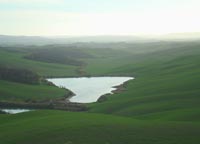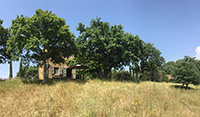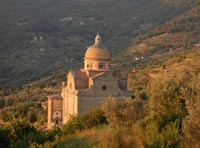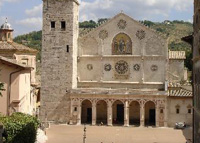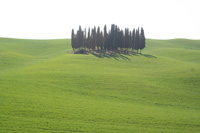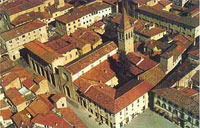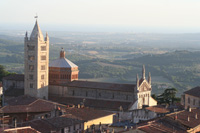 |
|
|
|
Crucifixion (detail), 1475, Koninklijk Museum voor Schone Kunsten, Antwerp |
| Antonello da Messina (ca. 1430–1479) | Crucifixion |
| The Crucifixion is the subject of three different paintings by the Italian Renaissance master Antonello da Messina. [1] The first two were completed around 1454/1455, the third in 1475. They are housed in the Brukenthal National Museum (Sibiu, Romania); the Royal Museum of Fine Arts of Antwerp (Antwerp, Belgium) and in the National Gallery (London, UK), respectively. The Sibiu Crucifixion In the nineteenth century, this painting was believed to be by a fourteenth-century German painter. However, since 1902 the attribution to Antonello da Messina is universally accepted, and the panel is considered to be an early masterpiece of the artist. It is the earliest work in a stylistically related series on the subject of the Crucifixion, continued by the versions in London and Antwerp. In the version at Sibiu, Antonello portrays the landscape behind the Crucifixion - the city and the Strait of Messina - from a bird's eye view, from an almost topographical perspective. |
 Crucifixion (detail), 1475, Koninklijk Museum voor Schone Kunsten, Antwerp |
|
| The Antwerp Crucifixion A total of only 12 signed works by Antonello have been preserved. Ten of them are also dated. One of these is the Antwerp Crucifixion. The following text is written in tiny characters on a small piece of parchment on a piece of wood broken off from the crucifix in the left foreground: '1475 Antonellus Messaneus me pinxit.'
|
|
||||||||||||||||||||||||||||||||||||||||||||||||||||||||||||
Art in Tuscany | Giorgio Vasari | Lives of the Most Excellent Painters, Sculptors, and Architects | Antonello da Messina The National Gallery, London | Antonello da Messina, Christ Crucified, 1475 | www.nationalgallery.org.uk |
||||||||||||||||||||||||||||||||||||||||||||||||||||||||||||
This page uses material from the Wikipedia article Crucifixion (Antonello da Messina), published under the GNU Free Documentation License. |
||||||||||||||||||||||||||||||||||||||||||||||||||||||||||||
|
||||||||||||||||||||||||||||||||||||||||||||||||||||||||||||

